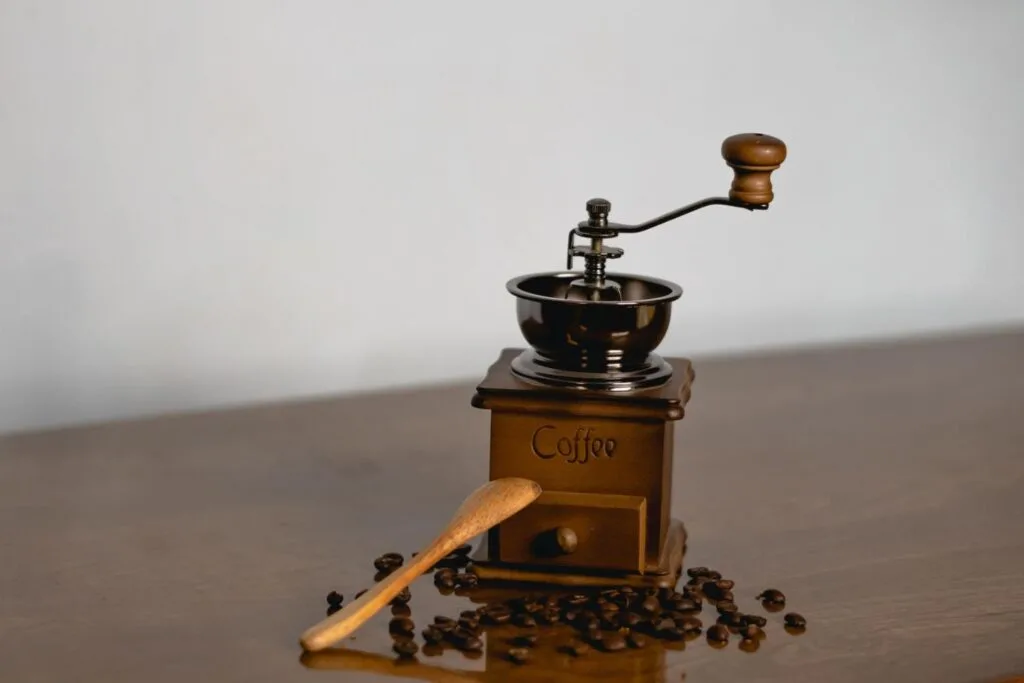The job of a coffee grinder is turning whole beans into coffee grounds. The best coffee grinder reviews suggest they don’t.
There can be big differences between coffee grinders.
Aside from design and price points, coffee grinders can also differ in grind size adjustment, operation, grind volume, and grind mechanism.
Different grinders are meant for other purposes, so pick yours out wisely.
Not All Coffee Grinders Are the Same
A coffee grinder isn’t just a coffee grinder; it could be a specific type of grinder that is not intended for the kind of ground you’re looking to accomplish.

Grinders can differ from each other in a lot of ways, including but not limited to:
- Type (manual and electric)
- Grinding type (blade and burr)
- Burr type (stainless and ceramic)
- Design
- Brew method
- Burr shape (conical and flat)
- Grind dose
- Quality
- Retention
- Grind size adjustment
Let’s have a look at a few of these differences in detail.
Manual or Electric?
There are two types of grinders: manual and electric. From their names alone, you’d have a good idea of what the difference is.
The manual or hand grinder doesn’t come with an electric engine.
It has a crank on top that you turn to deliver rotational force to the burrs via the driveshaft.
Most manual grinders are handheld, while a few are mounted to a countertop or table.
The former tends to be lighter and more compact and the latter more imposing, which is why they aren’t as common. Hand grinders require more effort from you, but they also help you become more involved in coffee-making.
Electric grinders are built with an electric motor that turns the burrs or blades.
All you need to do is push a button on these appliances to grind the coffee beans.
They’re less time-consuming than their manual counterparts, but that isn’t necessarily a good thing if you want to savor the experience.
Some motor-driven grinders can be annoyingly noisy, but their quick grinding process means you won’t have to put up with the noise for long.
Some models are more prominent and consume quite a bit of space, which doesn’t make them ideal for small kitchens.
Not to mention, they are significantly pricier than handheld alternatives of the same quality.
Blade and Burr Grinders
So, will it be blade or burr grinders? Let’s differentiate the two, so you can find out.
Coffee world newcomers often gravitate toward blade grinders more than burr options. That’s because they’re cheaper and are popular for grinding spices.
They also possess blender-like blades attached to the container’s bottom, which prevents beans from getting stuck under the blades.
Blade-type grinders will always come with electric motors. Motor-powered blades can spin at speeds that the user cannot control over the resulting grind size.
The longer blades spin, the finer the grinds become. Thus, there will be grinding size inconsistency, which will affect your coffee experience.
The kind of grinding associated with magnificent coffee is burr grinding.
Using a burr grinder is like having a small millstone at your disposal.
You either turn the burr by hand or press a button to turn on the motor. Instead of blades, burrs use teeth to cut apart rather than smash beans. Their shape also pushes grinds out of the other side.
Since grinds have to fit between the burrs, they would come out more uniform in size.

What We Suggest
We understand if you’re a bit confused right now. We’ve only covered the tip of the iceberg where coffee grinder differences are concerned.
But, basically, here’s what you need to be sure of when purchasing your first “real” coffee grinder:
- Budget
Make sure to have a set budget. It can be so easy to fall into the trap of buying a model more expensive than the one you originally wanted.
You can get an entry-level manual grinder for a little more than $30, and that’s usually enough to get the job done.
- Grinder Type
Electric grinders are easier to use and more convenient, but they’re also more expensive but don’t get you as involved in the process.
A manual grinder of the same quality can take more time to grind coffee beans, but it’s cheaper and takes the coffee-making process to the next level.
Also, avoid blade grinders as much as possible; opt for a ceramic hand grinder instead.
It’s only a bit more expensive than your standard blade grinder and does a much better job of grinding coffee beans.